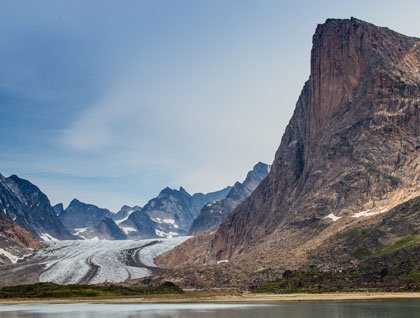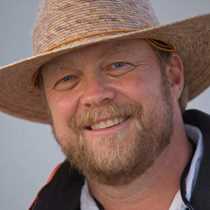After an amazingly calm crossing of the Denmark Strait from Iceland, today Greenland came into to view as National Geographic Explorer came out of the fog. The first icebergs of the voyage could be seen strung along the mountainous coast of the world’s largest island.
In his opening remarks, Caption Leif Skog emphasized that one of the hallmarks of a true expedition is uncertainty. Indeed, our quest for the fabled Northwest Passage is filled with great anticipation, and this morning we did not know what we would encounter in Prins Christian Sund, a narrow fjord that cuts through Greenland’s southern tip.
It was all hands on deck as Explorer navigated the winding channels, making a scenic passage through to the west coast. To everyone’s surprise, there was very little ice to negotiate. After some light drizzle, the sky cleared and the sun illuminated the glaciers carving the landscape. The photographers among us had a field day, as the light changed, reflections came and went, and jagged mountains rose steeply from the sea.
We marveled at the spectacular exposures of Greenland’s ancient Precambrian basement rocks, some more than two billion years old. Here, the rocks were showing their age as the granitic intrusions and metamorphic schists are sliced and diced by faults and fractures, having been tortured by the forces of plate tectonics that assembled ancient continents then rifted them apart with the opening of the Atlantic Ocean.
The landscape was an outdoor classroom for geology and glacial landforms. Waterfalls spilled from the hanging valleys, fed by the melting ice in the cirque valleys above. In every direction we could see textbook examples of U-shaped valleys, rounded exfoliation domes, and serrated mountain ridges called erêtes.
The afternoon was capped off with afternoon tea served on the aft deck. Mind you, this was a very special tea with fresh cod and cold beer. Life is good in the Arctic!







